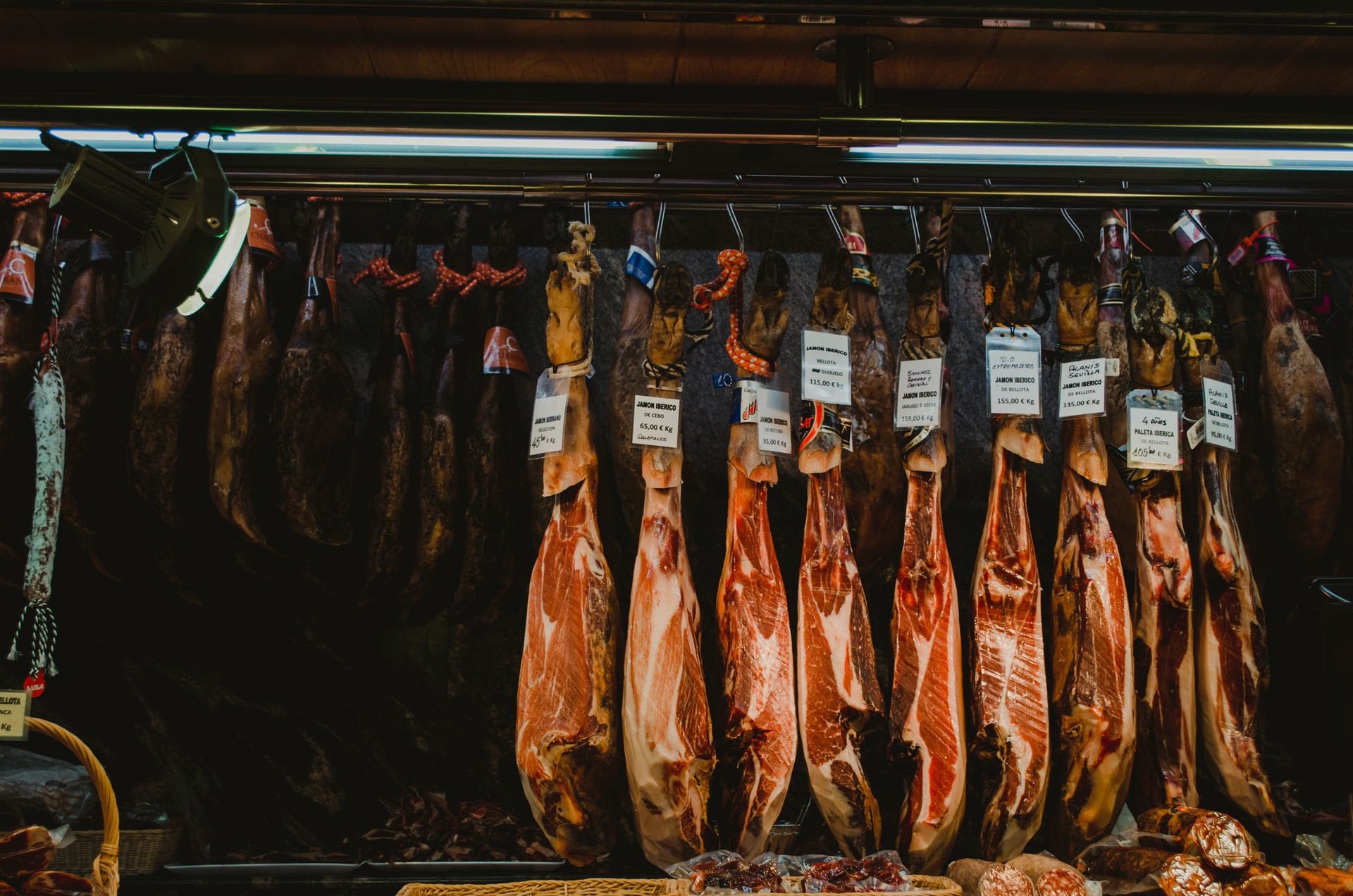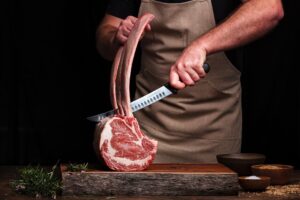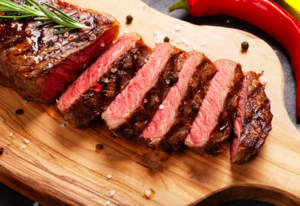Ham is as luxurious and delicate as cheese and wine. Coincidentally, these three kinds of foods are the perfect match for an appetizer or snack. But it is daunting when you try to look for a ham in front of millions of similar products. In fact, they can be totally different on the basis of processing methods, origins, pig breeds, ingredients etc. We’ve picked 8 types of ham for you as well as some shopping tips. Let’s dive in!
Table of Contents
What is Ham?
Ham is the hind leg of animals, which is usually pig, that is typically processed. It is generally aged, wet-cured or dry-cured, and sometimes smoked. In ancient times, people preserved fresh foods by curing, ham is one of the oldest processed foods of humans. And today, dry-cured ham is a luxurious delicacy.
► Read More: 20 Pork Cuts Must to Learn (American Cutting Diagram)
Firstly to Know the Processing Ways of Different Types of Ham
To understand ham, you have to know how it is processed first. There are 3 major types of ham according to the processing methods. They are Fresh Ham, Wet-cured Ham, and Dry-cured Ham.
1. Fresh Ham
Fresh Ham refers to the hind leg that is not cured or smoked. It is fresh and you have to cook before enjoying it just like ordinary pork. Some people will buy the whole fresh ham and bake it for Easter or gatherings.
2. Wet-Cured Ham
The process of making Wet-Cured Ham involves immersion or injection of brine, and sometimes goes with other ingredients like sugar or honey to deliver more flavors. Moreover, they are cooked, and some of them are smoked.
Wet curing increases the volume and weight of the final product for around 4% that results in a nice earnings for the producers. What’s more, the wet-cured ham only needs a few days to complete the whole process. Thus, they are mass-produced which you can find in supermarkets and the price is much lower than that of dry-cured ham.
3. Dry-Cured Ham
Making Dry-Cured Ham is to cover the raw pig’s hind leg in salt without adding any water and drain all the blood. Next, the producers will wash and hang it in a dark room under strictly controlled temperature until dry, which is dry aging. Dry-cured ham is in rosy pink and tends to be salty. You can directly eat it after carving without cooking.
Different types of ham have different duration of curing. For example, Serrano ham takes 9 to 12 months to cure while Iberian ham (Jamón ibérico) needs up to 2 years to reach the concentrated and optimal flavor. Producing dry-cured ham requires a lot of hard work, it is artisanal, delicate, and luxurious.
► Read More: Dry Aged Beef: What Is It? How to Cook? Where To Buy?
8 Types of Ham that Must Know
Ham has many varieties. Apart from the different processing methods as mentioned in the above, types of ham vary by many factors such as origins, pig breeds, ingredients, and cuts. Here is the list of 8 types of ham for you!
1. Parma Ham / Prosciutto di Parma (Italy)
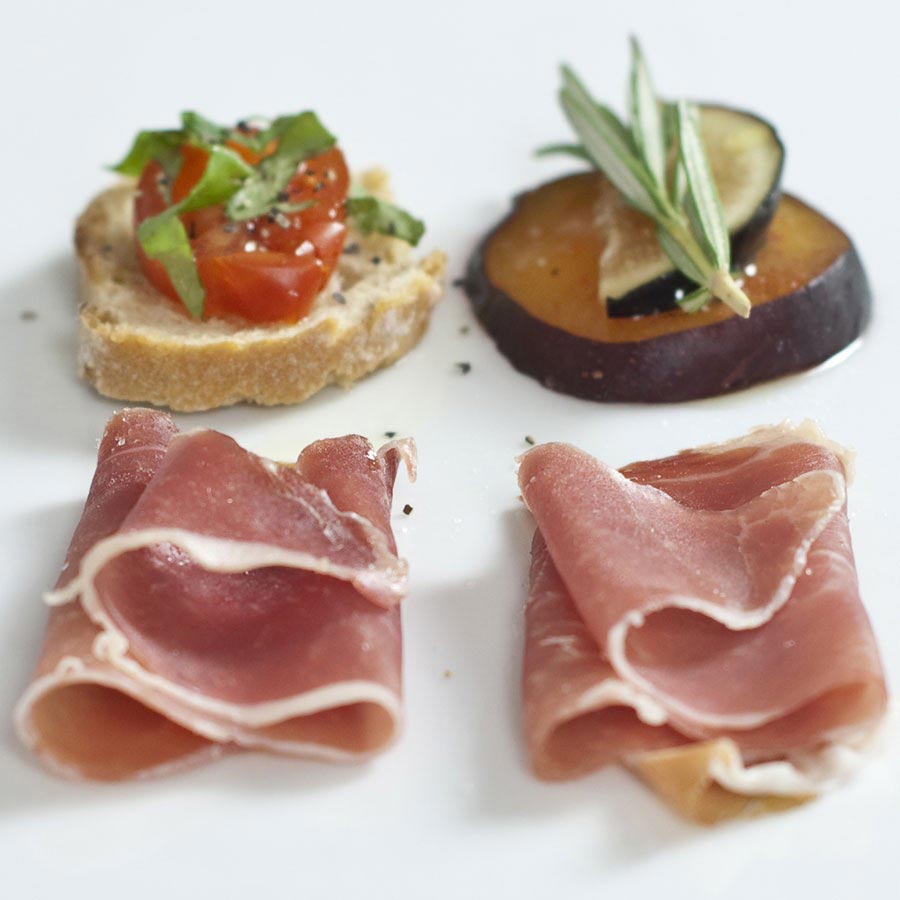
Prosciutto is an Italian word that refers to Italian dry-cured ham. Many regions in Italy produce ham, among which the ham produced in Parma is the most famous. They are Parma Ham, or Prosciutto di Parma in Italian.
The pigs are grown on the farms located in beautiful mountains. Most importantly, the farmers will feed them barley, corn, and whey produced from Parmesan cheese. That’s why Parma Ham tastes soft, smooth, somewhat sweet and delicate. Curing Parma Ham involves sea salt only but not any additives. And the dry curing process requires a minimum of 12 months, the artisans generally dry cure the ham for 18 to 24 months.
It is common to taste Parma Ham with melon, fig, cheese and bread. Or wrap it on grissini, an Italian breadstick.
Click here to buy Whole Parma Ham or Sliced Parma Ham. And apply our unique 10% discount code: KitchenTeller on the Basket page or the Payment page during checkout!
► Read More: What Is Parma Ham? What & How Is It Made? | Prosciutto di Parma 101
► Read More: 20+ Types of Cheese Must To Know | The Most Complete Cheese Guide
2. Iberico Ham / Jamón Ibérico (Spain)
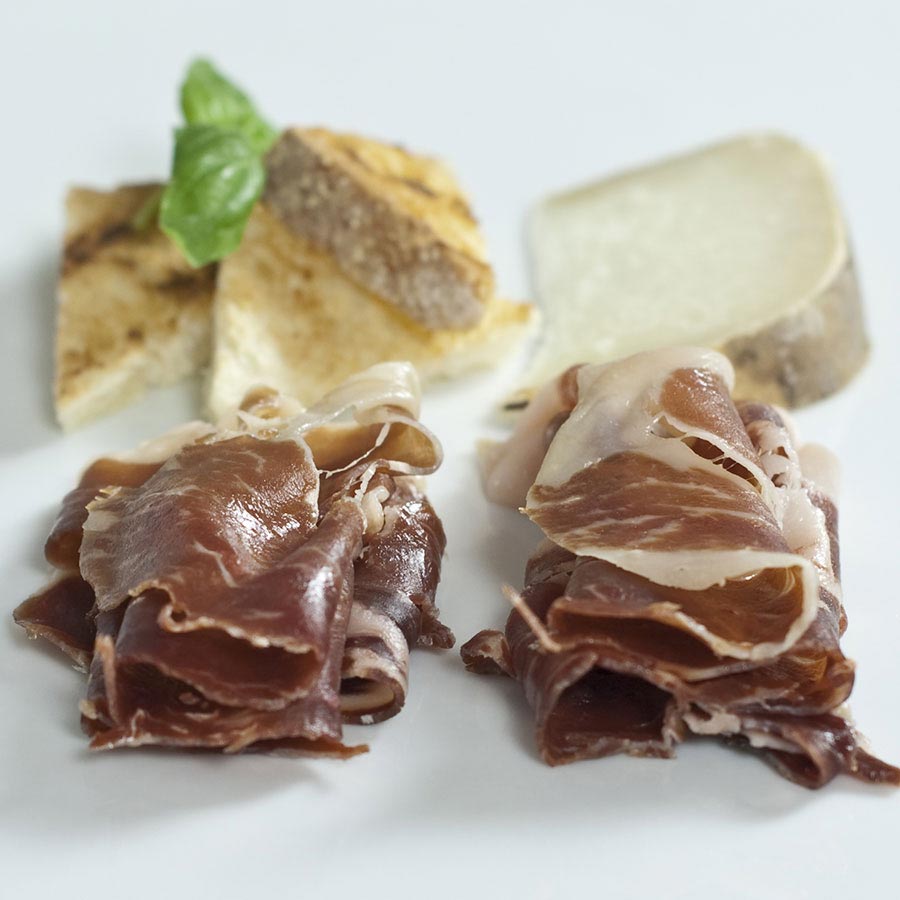
Iberico Ham (Jamón Ibérico in Spanish) is the top-notch Spanish ham. It is made of Iberian pigs which grow up in the mountain regions of Iberian Peninsula (i.e. Spain and Portugal nowadays).
Iberian Pig
Iberian pigs have slender legs, a long snout and black hair. Yet, their hair is possible to be grey or even red since most of them are mixed with Duroc red hair pigs. This also leads to a problem: less and less purebred Iberian pigs. Therefore, the Spanish government legislated that only the hogs having at least 50% of Iberian pigs bloodline can be labeled as “Iberico”.
The five-star breeding method is the Ace to strive for the best quality of Iberian pigs. They are living in the vast oak forest freely. To make sure they have sufficient acorns, olives and weeds, each single pig has a hectare (larger than a standard football pitch!) scope of activity. Thanks to these, the Iberian pork has a rich marbling and is tender with acorn aroma, it will melt in your mouth just like what Wagyu beef does.
Iberico Ham
Iberico Ham needs at least 24 months to dry age but the duration of aging is just for reference. Dry aging longer doesn’t mean the quality is higher.
And the best way to taste Iberico Ham is to enjoy it solely raw, in this way, you can feel the original taste of the ham. If you prefer pairing with some foods, try something bland like bread and fig.
Spain has started to classify Iberian Ham into four grades according to food source, breeding method and breed purity since 2014. The following grades start from the finest—“Bellota 100% Ibérico”, “Bellota Ibérico”, “Cebo de Campo Ibérico” and “Cebo Ibérico”.
Click here to buy Whole Iberico Ham or Sliced Iberico Ham. And apply our unique 10% discount code: KitchenTeller on the Basket page or the Payment page during checkout!
► Read More: Iberico Ham: Why Is It So Expensive? How to Choose and Eat?
3. Serrano Ham / Jamón Serrano (Spain)
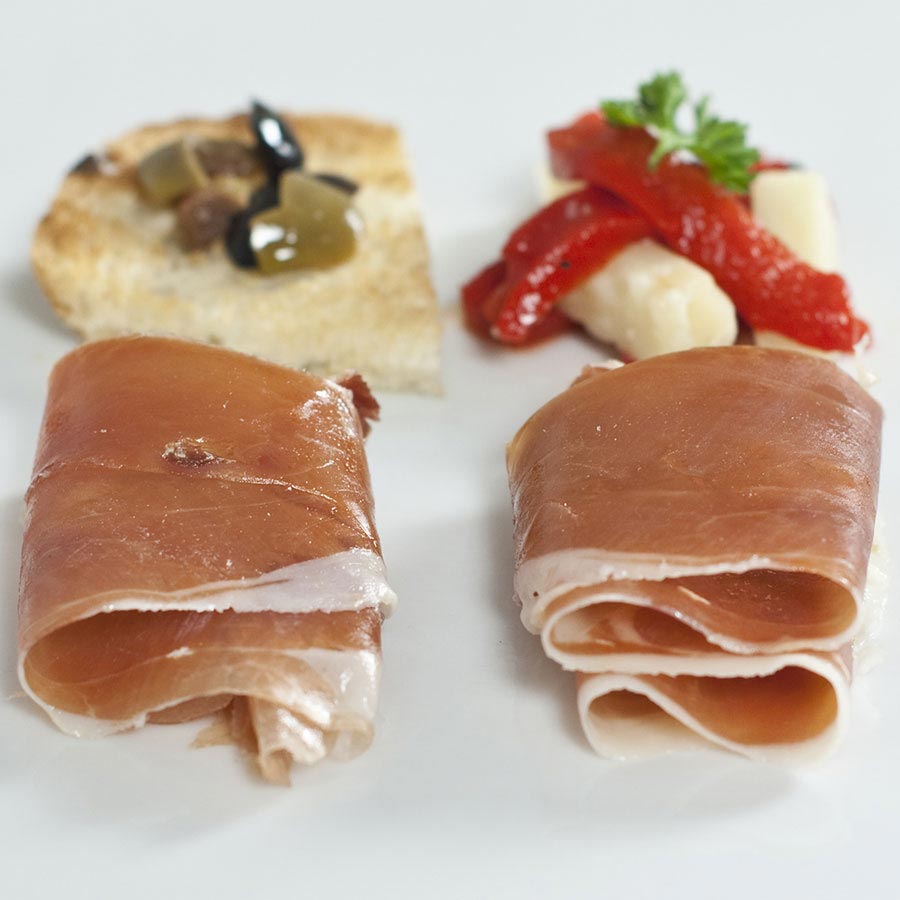
Serrano Ham is also a Spanish ham and the major difference is that Serrano Ham is made of white pig while Iberico Ham is sourced from black pig. Jamón Serrano accounts for 90% of the Spanish ham and so you can find it in Spain easily.
The flavor of this type of ham is not as strong as Iberico Ham. It doesn’t have the oak aroma since the white pigs are fed with wheat and corn but not oak. Serrano Ham is lighter but savory, and the price is more budget-friendly which is suitable for the beginners of ham.
Dry-curing Serrano Ham requires a shorter period of time ranging from 8 to 24 months. Generally speaking, the ham that has been dry-cured for more than 12 months is premium. There are 3 grade labels of Serrano Ham according to their duration of dry curing—
”Bodega” refers to the ham that undergoes dry curing for 9-12 months;
“Reserva” means the ham that undergoes dry curing for 12-15 months; and
“Gran Reserva” is the ham that undergoes dry curing for a minimum of 15 months.
Since Serrano Ham is not that strong, it is extremely versatile to enjoy with endless varieties of foods such as melon, cheese, salad and more.
Click here to buy Whole Serrano Ham or Sliced Serrano Ham. And apply our unique 10% discount code: KitchenTeller on the Basket page or the Payment page during checkout!
4. Bayonne Ham / Jambon de Bayonne (France)

Bayonne Ham is the crème de la crème among thousands of types of French ham. As the name implies, its origin is Bayonne, a city in Southwest France near Spain. The city was born to be a ham production place thanks to the ideal location. It is located at the confluence of the Nive and Adour rivers, the Bayonne Ham is rubbed in the salt that obtains from the Adour rivers or Salies-de-Béarn, then aged in natural warm wind over 12 months.
As a result, Bayonne Ham has a deep red color and a rich but nuanced flavor. It is soft, smooth and savory with a sweet aftertaste as well as a melt-in-the-mouth mouthfeel which has attracted many attention of gourmets around the world. This type of ham goes well with cheese, fruit and white asparagus.
You may sometimes see the label of PGI when shopping for Bayonne Ham, do you know the meaning behind? PGI is the abbreviation of “Protected Geographical Indication” which is an agreement within the European Union. The agreement is to protect the foods that are produced only from a specific place just like Bayonne Ham. It guarantees full quality and true geographic origins which put an end to the fake products and shoddies.
Use our unique discount code: KitchenTeller on the Basket page or the Payment page during checkout to enjoy a 10% discount for Whole Bayonne Ham!
5. Virginia Ham (U.S.)
Virginia Ham perhaps is the most famous country ham of the United States which originates from Virginia. They were made from the pigs that were fed with acorns, peanuts and peaches, and thus Virginia ham is favored for their unique sweetness. Nowadays, most of them are grain-fed but still delicious.
Virginia Ham is dry-cured for more than a month, then cold smoked over apple and hickory wood fires for 10 to 15 days. Next, the ham producers will hang it to age in a controlled environment for at least a year which delivers a remarkably rich flavor. To prepare Virginia Ham, the chef sometimes will soak it in water to dilute the saltiness. Because the producers heavily salt the ham beforehand and the aging process deepens the saltiness.
Click here to buy Virginia Ham and apply our unique 10% discount code: KitchenTeller on the Basket page or the Payment page during checkout!
6. Berkshire Ham (English Breed)
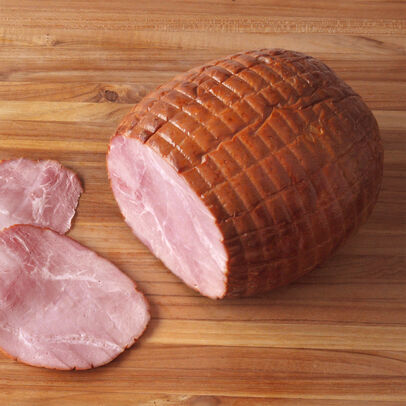
Berkshire is an old pig breed that originates from England. The Berkshire pigs were brought to the United States in the early 1800s and the farmers provide a considerate care to this extraordinary breed. You can easily recognize them by their unique characteristics: the six white markings on four hooves, snout and tail.
Berkshire pork is the Wagyu beef in the pork world. In other words, they are unbeatable in texture and flavor. The meat is redder in color with a wonderfully rich marbling. The high level of marbling makes it incredibly tender and flavorful. Using this outstanding breed to make ham gives the gourmet an unforgettable experience.
► Read More: 6 Best Pig Breeds For Meat Around The World
7. Mangalica Ham (Hungarian Breed)
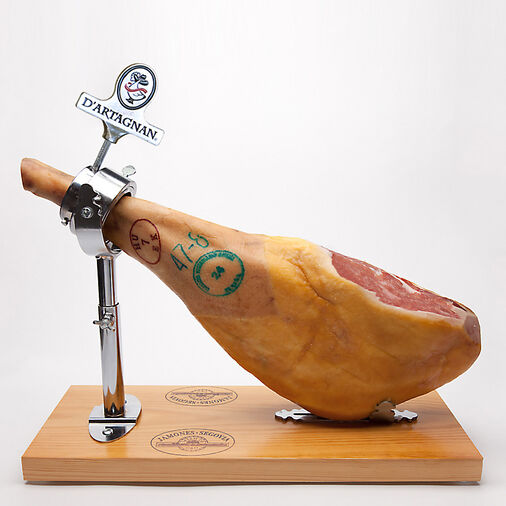
Mangalica (or Mangalitsa) is a pig breed from Hungary while this Hungarian name means pig contains a great deal of lard. Over 65% of the Mangalica pig carcass is fat which makes it one of the fattiest pig breeds all over the world. This remarkable breed has not only a rich intermuscular fat but also a gorgeous intramuscular fat. Intramuscular fat has another desirable name—marbling, that delivers a creamy mouthfeel. This is also an amazing feature you can find in premium beef and hence Mangalica pig has another fancy name: Kobe beef of pork.
Spanish producers usually use it for making delicious ham which makes a good use of its distinctive feature and lifts it to the next level. In Hungary, it is typically used for sausage and salami.
8. Tasso Ham
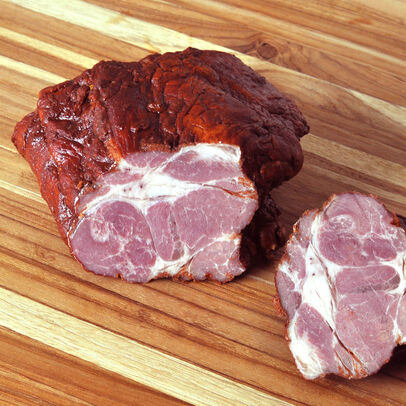
Tasso Ham is not exactly a ham since it is not the hind leg of pig but the shoulder. And due to the location, it is generally fatter than regular ham as hind leg exercises constantly but the shoulder has a lower amount of work. Yet, it is bursting with flavor as well.
To process Tasso Ham, the producers first cure it in a great amount of salt and sugar mixture. The big difference to regular ham is that Tasso Ham is only cured for 3 to 4 hours. After that, they will rinse the ham and rub with a mixture of spice that includes garlic and cayenne pepper. Finally, the ham is sent to hot-smoke until cooked through.
Tasso Ham is ready-to-eat and sometimes the foodie eats it solely. But a more common way of enjoying this ham is to use it as a part of flavor base for stews, soup and gravy. Alternatively, you can add it in crab cakes, gumbo, pasta, and rice. You may find this ham in Cajun cuisine, where it is the origin of Tasso Ham, such as jambalaya.
Other than the above types of ham, you can choose the ham which tends to be sweet rather than salty. For example, Honey Maple Ham, the ham that is brushed with brown sugar, honey and maple syrup, and then smoked.
How to Choose Ham? Shopping Guide of Ham!
Yes, I know it is sometimes confusing to choose one among thousands of ham on the market apart from the types mentioned previously. Especially there are many different descriptions on the pack such as bone-in, boneless, spiral sliced and so on. Here, we will explain how to choose a ham that suits you. Let’s go!
◈ Whole Ham or Sliced Ham?
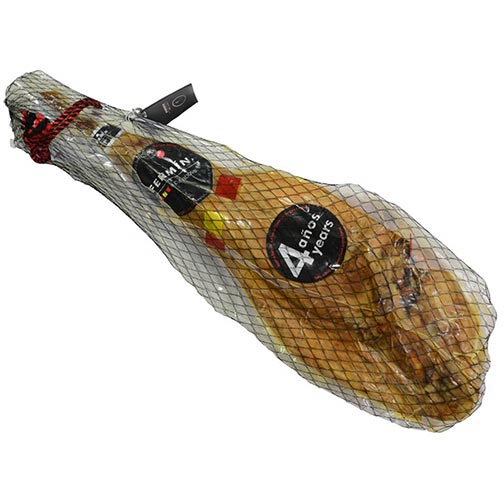
The whole ham is stunning and photogenic. Also, unsliced ham is more moist than the pre-sliced ham. However, to enjoy a whole ham, you need to carve it by yourself which may not be suitable for newbies. Above all, a whole ham can feed a lot of people. The rule of thumb is to plan about 1/2 pound per person for bone-in ham while 1/3 pound for boneless ham. Hence, you may not finish the whole ham in one gathering and you have to store it properly.
There is no fuss when it comes to the pre-sliced ham, typically no carving and storing is needed. To choose whole ham or pre-sliced ham, It depends on your preference.
◈ Bone-in or Boneless Ham?
It is the case of whole ham. Bone-in Ham requires more carving work but the bone adds an extra subtle flavor. It is particularly great for making ham dishes like stews and soup which richen the flavor.
Carving Boneless Ham is as easy as pie. It makes gathering go smoothly and saves lots of time for every guest which is especially important for large gatherings.
◈ Butt End or Shank End Ham?
The whole hind leg is huge and so it is usually cut into two parts for sale—Butt End and Shank End.
The butt end is the top half of the ham that is meatier, fattier and more tender than the shank end which leads to a richer flavor. Yet, it contains a large hip and pelvic bone that makes carving harder.
The shank end is the lower part of the ham. It tends to be leaner than the butt end ham. And the carving work is easier since there is only one long leg bone.
◈ Spiral Cut Ham
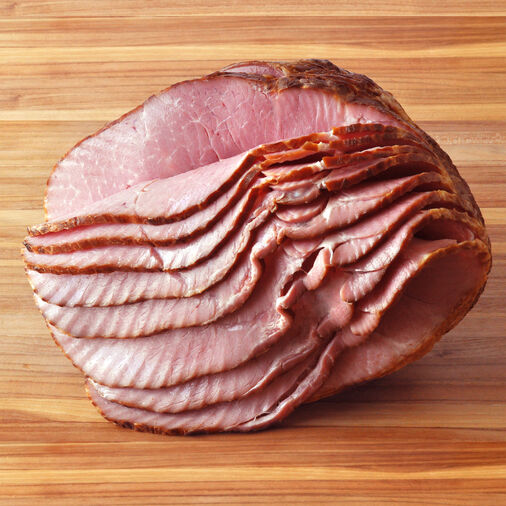
There are various types of carving for ham. Spiral cut is a style that pre-slicing the ham meat without cutting the meat thoroughly while the meat is still attached to the bone. No tough carving work here. The diners only need to cut along the semi-sliced ham to get the perfect ham slices.
◈ Deli Sliced Ham
Deli-style cuts are convenient to enjoy. You can take it for your next ham sandwich in a breeze.
Summary
To sum up, ham has a long history all over the world, and each country has their own tradition and workmanship of making ham. Therefore, there are millions of types of ham and ham coming from different regions can be totally different. Each of them has their own characteristics and why not try them one by one? Enjoy!
► Read More: What & How Cheese Is Made? | Cheese Beginner’s Guide
► Read More: What Is Salami Made Of? Is It Healthy & Keto?

